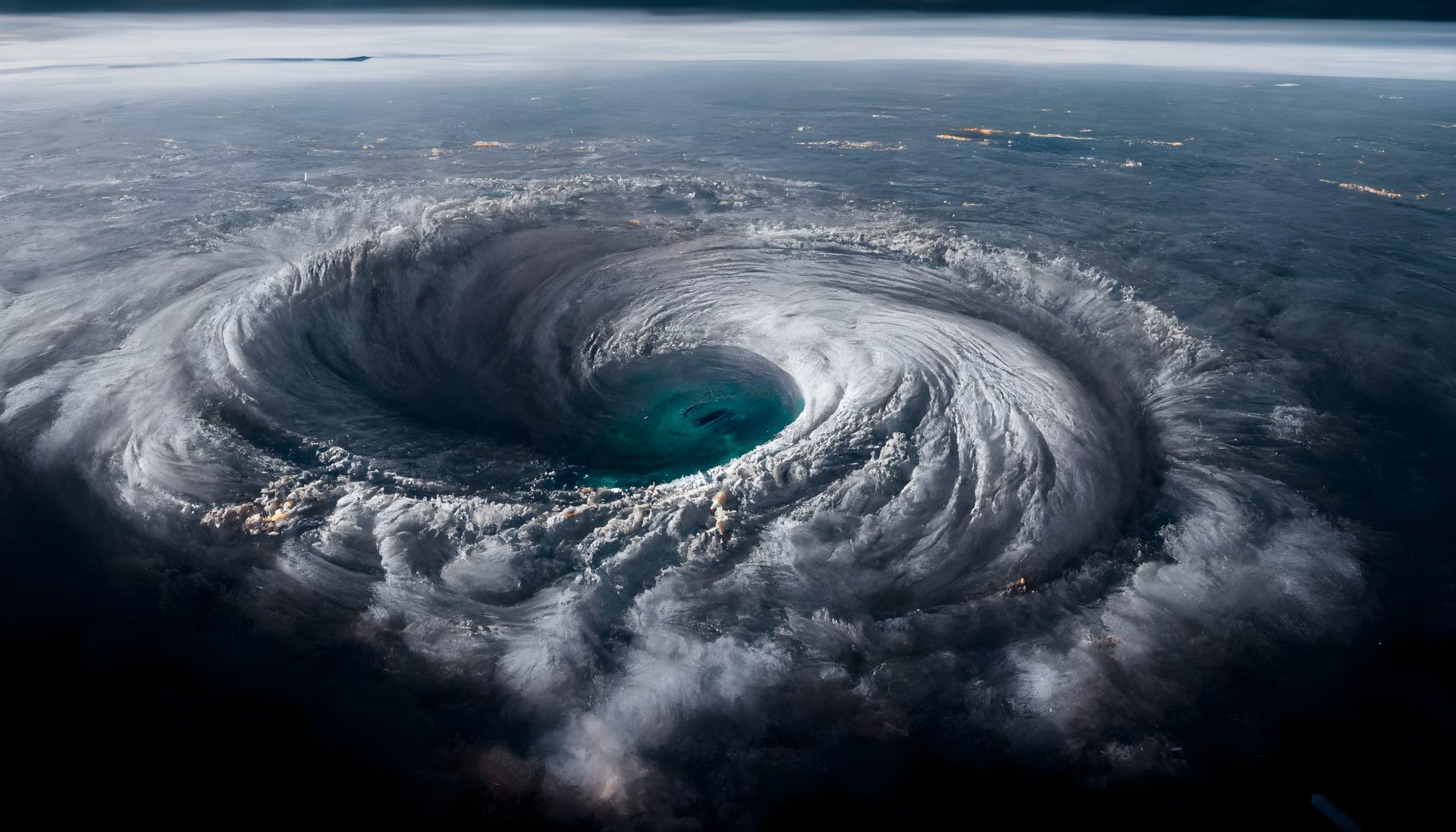
What exactly is a tropical storm? These powerful weather systems form over warm tropical waters and bring heavy rain, strong winds, and sometimes devastating impacts. With sustained winds of at least 39 miles per hour (63 kilometers per hour), tropical storms can escalate into hurricanes, typhoons, or cyclones, depending on their location. They affect coastal areas the most, causing flooding, property damage, and even loss of life. Understanding how these storms form, their characteristics, and their potential impacts can help communities better prepare and respond. Dive into these 40 facts to grasp the full scope of tropical storms and their significance.
Key Takeaways:
- Tropical storms are powerful weather events formed over warm ocean waters. They can cause coastal flooding, strong winds, and heavy rainfall, leading to significant damage and loss of life.
- Understanding the structure and behavior of tropical storms is crucial for preparation and mitigation. Early warnings, community preparedness, and international cooperation are key in managing their impact.
What is a Tropical Storm?
Tropical storms are powerful weather events that can cause significant damage. Understanding their formation, characteristics, and impacts can help us prepare better.
-
Definition of a Tropical Storm: A tropical storm is an organized system of clouds and thunderstorms forming over warm tropical waters, with sustained winds of at least 39 miles per hour (63 kilometers per hour).
-
Formation of Tropical Storms: These storms form when warm ocean waters, high humidity, and low atmospheric pressure come together, creating a tropical depression that can develop into a tropical storm.
Types and Classification of Tropical Cyclones
Tropical cyclones go by different names and are classified based on their wind speeds.
-
Types of Tropical Cyclones: They are called hurricanes in the Atlantic and eastern Pacific, typhoons in the western Pacific, and cyclones in the southern Pacific and Indian Oceans.
-
Classification of Tropical Storms: Using the Saffir-Simpson Hurricane Wind Scale, tropical depressions have winds of 38 miles per hour (61 kilometers per hour) or less, tropical storms have winds of 39-73 miles per hour (63-118 kilometers per hour), and hurricanes have winds of 74 miles per hour (119 kilometers per hour) or higher.
Anatomy of a Tropical Storm
Understanding the structure of a tropical storm can help predict its behavior and impact.
-
Eye of the Storm: The eye is a calm area at the storm's center, characterized by clear skies and light winds.
-
Eyewall: Surrounding the eye, the eyewall contains the most intense thunderstorms, with the strongest winds and heaviest rainfall.
Impacts of Tropical Storms
Tropical storms can cause a variety of destructive effects, especially in coastal areas.
-
Storm Surge: A storm surge is a rise in sea level caused by the storm, leading to coastal flooding and damage. It can reach up to 6 meters (20 feet) and extend over 150 kilometers (93 miles).
-
Impact on Coastal Areas: Coastal regions face significant damage to buildings, infrastructure, and vegetation due to strong winds and storm surges.
-
Rainfall and Flooding: Heavy rainfall from tropical storms can lead to flash flooding and riverine flooding, causing extensive property damage and loss of life.
-
Wind Speed: Wind speeds in tropical storms can reach up to 320 kilometers per hour (200 miles per hour), capable of uprooting trees and destroying buildings.
Frequency and Notable Tropical Storms
Tropical storms occur frequently and some have left a lasting impact on history.
-
Frequency of Occurrence: Up to 150 tropical storms can occur each year, with varying frequency and severity depending on the region and time of year.
-
Notable Tropical Storms: Examples include Hurricane Katrina (2005), Hurricane Sandy (2012), Typhoon Haiyan (2013), and Cyclone Pam (2015), each causing significant damage and loss of life.
Climate Change and Tropical Storms
Climate change is expected to influence the behavior and impact of tropical storms.
- Impact of Climate Change: Warmer ocean temperatures may lead to more powerful storms and increased rainfall, exacerbating flooding.
Preparation and Mitigation
Being prepared can significantly reduce the impact of tropical storms.
-
Preparation and Mitigation: Evacuation, storm shelters, boarding up windows, and stockpiling supplies are crucial steps in preparation.
-
Understanding Storm Trajectory: Monitoring weather reports and using radar and satellite imagery can help track the storm's movement and intensity.
Role of Meteorologists and Technology
Meteorologists and technology play a vital role in predicting and mitigating the impact of tropical storms.
-
Role of Meteorologists: They forecast the storm's trajectory and intensity, issuing warnings to alert the public.
-
Naming Tropical Storms: The World Meteorological Organization (WMO) names tropical storms to help distinguish them.
Economic and Environmental Impacts
Tropical storms can have far-reaching effects on agriculture, infrastructure, and wildlife.
-
Impact on Agriculture: Strong winds and flooding can damage crops and cause soil erosion, leading to economic losses for farmers.
-
Impact on Infrastructure: Buildings, roads, and bridges can suffer significant damage, leading to economic losses and displacement.
-
Impact on Wildlife: Storms can displace animals from their habitats and destroy ecosystems, causing long-term ecological impacts.
Emergency Services and Long-term Recovery
Emergency services are crucial during and after a tropical storm, and long-term recovery is often challenging.
-
Role of Emergency Services: They conduct search and rescue operations and provide essential aid such as food, water, and medical supplies.
-
Long-term Recovery: Rebuilding infrastructure and economic recovery require significant investment and support.
Importance of Early Warning Systems
Early warning systems can save lives and reduce the impact of tropical storms.
-
Timely Warnings: These systems help people evacuate or prepare, reducing the risk of injury or death.
-
Community Preparedness: Early warnings enable communities to prepare, minimizing the overall impact.
International Cooperation and Community Preparedness
Global collaboration and local readiness are key to managing tropical storms.
-
Role of International Cooperation: Countries can share data and expertise, and international organizations can provide aid and support.
-
Community Preparedness: Having evacuation plans and stockpiling supplies can help communities withstand the storm's impact.
Understanding Storm Phases and Patterns
Knowing the different phases and patterns of tropical storms aids in predicting their behavior.
-
Understanding Storm Phases: Tropical depressions, tropical storms, and hurricanes each have distinct characteristics and impacts.
-
Understanding Wind Patterns: The direction and speed of wind are crucial in determining the storm's severity and damage potential.
Impact on Human Health and Tourism
Tropical storms can affect human health and disrupt tourism.
-
Impact on Human Health: Injuries, fatalities, and waterborne diseases are common during and after storms.
-
Impact on Tourism: Travel disruptions and damage to attractions can lead to economic losses in tourism-dependent areas.
Role of Technology and Local Governments
Advanced technology and proactive local governments are essential in managing tropical storms.
-
Role of Technology: Radar, satellite imagery, and modeling systems help track and predict storms with greater accuracy.
-
Role of Local Governments: They are responsible for emergency response operations and providing aid to affected communities.
Long-term Mitigation Strategies
Developing long-term strategies can help reduce the impact of future tropical storms.
-
Infrastructure Development: Building storm shelters and flood-control measures can mitigate the impact.
-
Community Education: Educating communities about the risks and impacts of tropical storms can help them prepare better.
Notable Facts and Figures
Here are some additional interesting facts about tropical storms.
-
Direction of Rotation: In the Northern Hemisphere, tropical storms rotate anti-clockwise, while in the Southern Hemisphere, they rotate clockwise due to the Coriolis Force.
-
Role of Storm Surges: Storm surges can cause coastal flooding and saltwater contamination of freshwater sources.
-
Tornadoes Within Storms: Tropical storms can spawn tornadoes, typically near the eyewall or in the inner rainbands.
-
Impact on Economic Activities: Tropical storms can disrupt trade and damage infrastructure, leading to economic losses.
-
Role of International Organizations: Organizations like the Red Cross provide aid and support to affected communities.
-
Understanding Rainfall Patterns: The intensity and duration of rainfall are critical in predicting flooding and its impact.
The Power and Impact of Tropical Storms
Tropical storms are some of nature's most powerful forces, bringing both awe and destruction. With winds reaching up to 200 miles per hour, they can cause massive damage to coastal areas, agriculture, and infrastructure. Storm surges and heavy rainfall lead to flooding, affecting both human lives and wildlife. Climate change is making these storms more severe, with warmer oceans fueling their intensity. Preparation and mitigation are crucial—evacuation plans, storm shelters, and early warning systems can save lives. Meteorologists and emergency services play vital roles in forecasting and responding to these storms. International cooperation and community preparedness are key to reducing their impact. Understanding the formation, characteristics, and effects of tropical storms helps us better prepare for these natural events. By staying informed and ready, we can minimize the devastation and recover more quickly.
Frequently Asked Questions
Was this page helpful?
Our commitment to delivering trustworthy and engaging content is at the heart of what we do. Each fact on our site is contributed by real users like you, bringing a wealth of diverse insights and information. To ensure the highest standards of accuracy and reliability, our dedicated editors meticulously review each submission. This process guarantees that the facts we share are not only fascinating but also credible. Trust in our commitment to quality and authenticity as you explore and learn with us.


